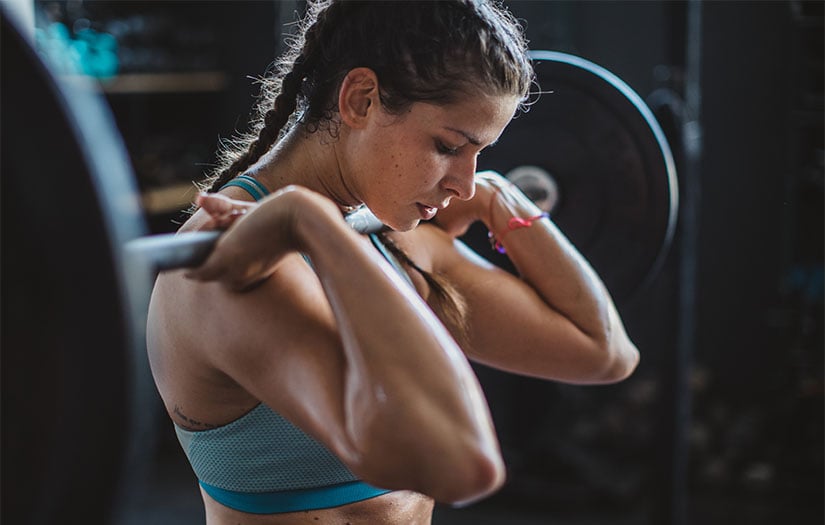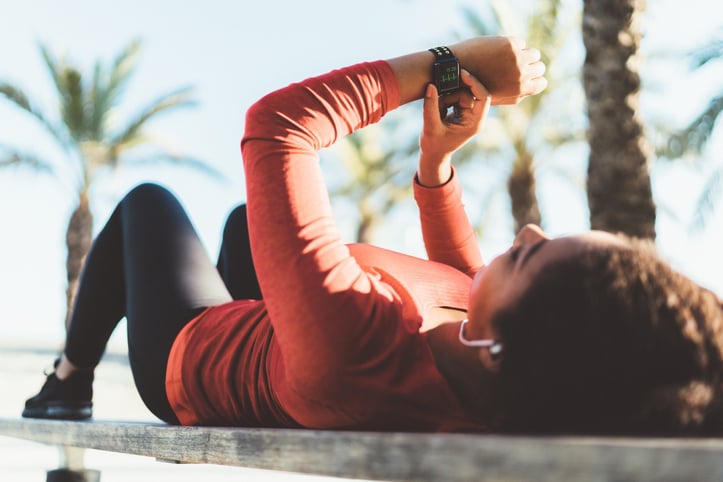Which is better, the front squat or the back squat? The answer to this ongoing debate depends heavily on the client.
Both the front and back squat movements require hip flexion, knee flexion and dorsiflexion during the eccentric phase and hip extension, knee extension and plantar flexion during the concentric phase.
Muscles Worked in Front Squats & Back Squats
Both front squats and back squats work the same muscle groups; prime movers include gluteals and quadriceps; synergists include the hamstrings; and stabilizers include the deep abdominal muscles (transverse abdominis).
EMG activity in each muscle group (quadriceps, hamstrings, gluteals) between the two lifts is nearly identical (1). Because of the inherent change in the position of the center of mass of the bar between the front and back squat lifts, the back squat results in decreased back extensor muscle activity (erector spinae) (1). Back squats also create greater compressive (downward) forces at the knees. However, shear (side to side) forces at the knee are identical in both lifts (very minimal) (1).
The primary difference between the two lifts is actually upper body mechanics. Individuals who lack shoulder external rotation may have a difficult time performing a back squat. These individuals are hard pressed to get the bar racked and held in the proper position across the upper back due to poor shoulder and thoracic spine mobility. These individuals usually display an upper crossed syndrome (rounded shoulders and forward head), typically seen in those who spend a lot of time driving or working on the computer.
The front squat does not require external rotation at the glenohumeral joint. However, some individuals find the position of the bar across the shoulders uncomfortable; especially if they have acromioclavicular joint (AC) joint dysfunction.
There is anecdotal evidence that front squats are safer on a client’s lower back, but this has not been proven definitively in research. Conversely, clients tend to be able to lift heavier loads with back squats.
The bottom line, both exercises help target the musculature of the lower extremities and can be beneficial developing muscular growth, strength and power. The exercise you choose should depend on the client’s squat posture / technique and the client’s preference. It is doubtful you’ll notice significant performance abilities by choosing one lift over the other. Remember, all training is cumulative.
If you want to learn more about different kinds of squats, check out the blog post link.
Reference:
- Gullett JC, Tillman MD, Gutierrez GM, Chow JW. A biomechanical comparison of back and front squats in healthy trained individuals. Journal of Strength and Conditioning Research. 2009 Jan;23(1):284-92.
















